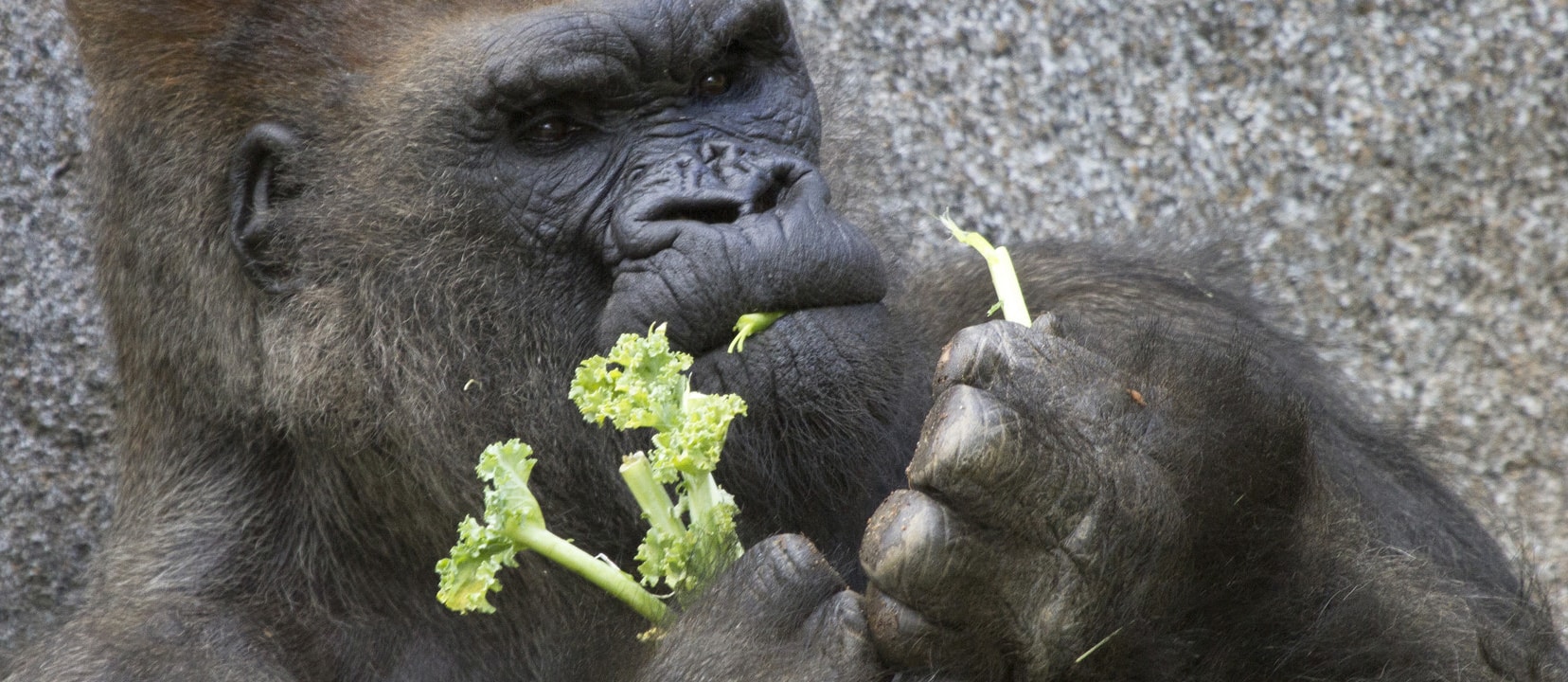


In the wild, gorillas can live for over 40 years. These huge apes can weigh up to 200kgs and can reach a height of up to 170cm tall. Gorillas are the biggest and most powerful primates found on earth. In captivity, gorillas have displayed significant intelligence and have even learned simple human sign language.As an Amazon Associate I earn from qualifying purchases. Much of their day is spent in play, climbing trees, chasing one another, and swinging from branches. Young gorillas, from three to six years old, remind human observers of children. These infants ride on their mothers' backs from the age of four months through the first two or three years of their lives. Unlike their powerful parents, newborns are tiny-weighing four pounds-and able only to cling to their mothers' fur. Reproductionįemale gorillas give birth to one infant after a pregnancy of nearly nine months. They eat roots, shoots, fruit, wild celery, and tree bark and pulp. In the thick forests of central and west Africa, troops find plentiful food for their vegetarian diet. Despite these displays and the animals' obvious physical power, gorillas are generally calm and nonaggressive unless they are disturbed. He may stand upright, throw things, make aggressive charges, and pound his huge chest while barking out powerful hoots or unleashing a frightening roar. Those who challenge this alpha male are apt to be cowed by impressive shows of physical power.

The leader organizes troop activities like eating, nesting in leaves, and moving about in a home range of 0.75-to 16 square miles. Troops also include several other young males, some females, and their offspring. Troops are led by one dominant, older adult male, often called a silverback because of the swath of silver hair that adorns his otherwise dark fur. These troops are organized according to fascinating social structures. Gorillas can climb trees, but are usually found on the ground in communities of up to 30 individuals. They also tend to be a bit larger than other gorillas and have shorter arms. To stay warm in the mountains, mountain gorillas have longer hair than their eastern lowland cousins, the Grauer's gorillas ( Gorilla beringei graueri). Scientists, however, warn that they could quickly slip back into being critically endangered. The International Union for the Conservation of Nature, which sets the conservation status of species, changed their status from "crticially endangered" to "endangered" in 2008 as their numbers improved. The majority of mountain gorillas are habituated to human presence because of the tourism industry, and while there are strict sanitation protocols in place and touching the gorillas is prohibited, disease could spread quickly. Catching illnesses from humans is also a threat. Climate change also poses a threat: While gorillas are adaptive, moving to higher elevations to adapt to warmer temperatures, those areas are densely populated with little forest remaining. They often get caught in snares laid out to trap other animals for bushmeat. Habitat loss is a major threat: agriculture, illegal mining, and forest destruction for charcoal production have degraded their forests. These gorillas live on the green, volcanic slopes of Rwanda, Uganda, and the Democratic Republic of Congo-areas that have seen much human violence from which the gorillas have not escaped unscathed. As their name hints, they live in the mountains at elevations between 8,000 and 13,000 feet. Mountain gorillas are a subspecies of eastern gorilla ( Gorilla beringei). There are about a thousand mountain gorillas remaining on Earth, and about half live in the forests of the Virunga mountains in central Africa.


 0 kommentar(er)
0 kommentar(er)
